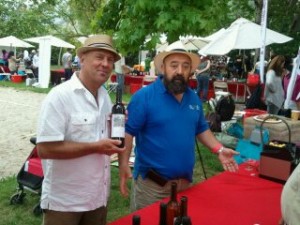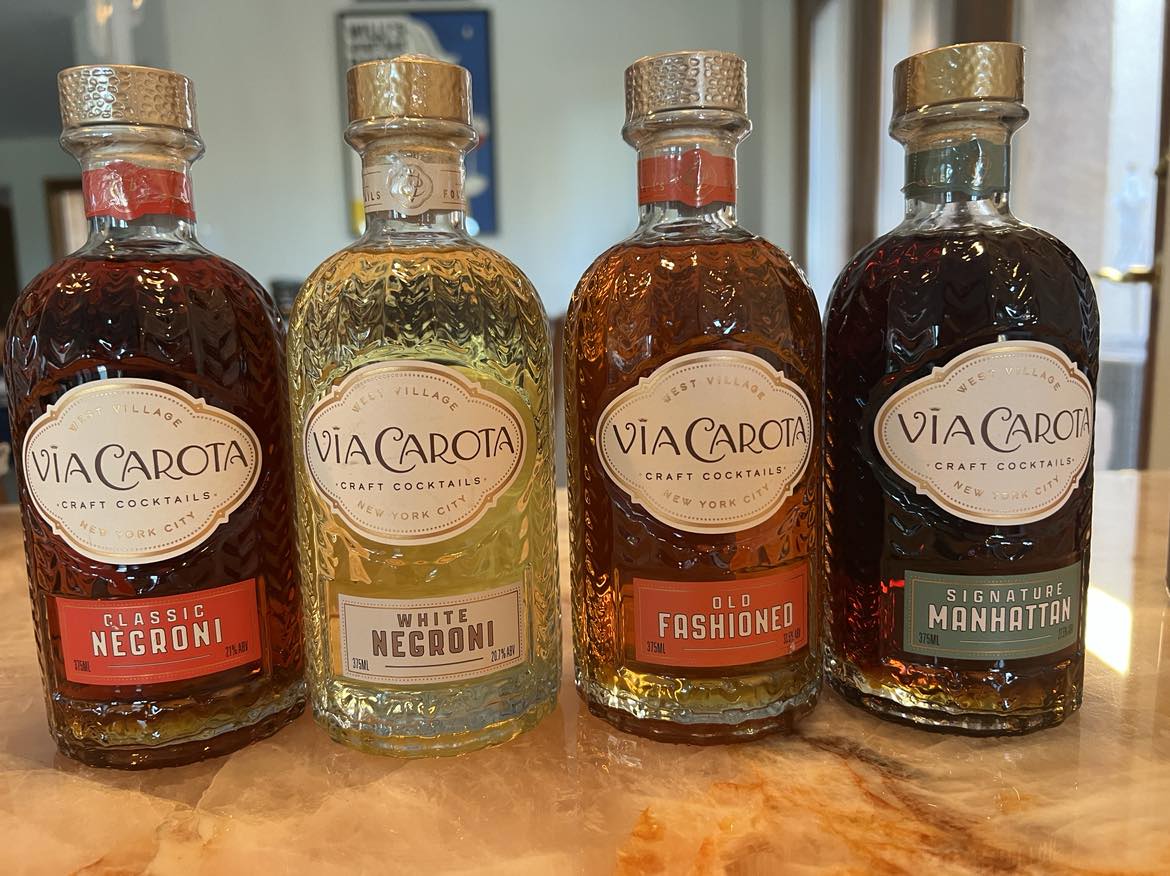In wanting to find the oldest wine grapes grown in the Santa Clarita Valley, I remembered that Juan Alonso, owner of Le Chene French restaurant in Agua Dulce, had his own wines on his extensive 34-page wine list.

I e-mailed Juan thinking starting with him was the best. Yes, he had been making wine since 1987 and also sold grapes to other winemakers. He invited my husband Eddie and me down for a visit, a tour and…a taste.
We knew our way to the “rock house” (as the restaurant had been dubbed years ago due to its rock-face façade) but never just for wine. We had many meals in the dining room prior to the remodel when you could see the chef handcrafting soups through the little cutout in the wall, surprised our waitress by asking her to read the sealed letter from our obstetrician telling us the sex of our unborn child, had brunch and met Cameron Smythe for maybe the first time at Juan’s generous annual wine tasting benefiting SCV seniors.
Oh that this were an article about the food. Suffice to say from the Escargot through to the rich French sauces thickly poured over your entree, pureed vegetables, cream of anything soups to Crème Brûlée and espresso – there is no finer French dining in our town.
And to go with it, Juan’s wine list has continuously been awarded the Wine Spectator magazine’s Best of Award of Excellence.
(From www.winespectator.com: Created to give special recognition to restaurants that clearly exceed the requirements of the Award of Excellence. These lists typically offer 400 or more selections, along with superior presentation, and display either vintage depth, with several vertical offerings of top wines, or excellent breadth across several wine regions.) We had our first Chateauneuf du Pape at Le Chene.
So here we were, just Juan, my husband Eddie and me, sitting at the rich oak bar about to taste from SCV’s oldest vines before a tour of the Alonso Family Vineyards. I spied his newly designed Vinum Conservator (http://www.vinumconservator.com/about.html) that promised to be less work than hand pumping, less money than nitrogen systems and a couple of local wine establishments had recently purchased.
Juan deftly demonstrated the machine and we were happy to hear that he, and friend Alain Frochaux, were also working on a smaller version for private home use.
“It allows you to sell a better bottle of wine every time.” Juan said as he poured our tastes.
We tried Felix’s 2004 Cuvee, a blend of 65% Grenache and 35% Syrah and then the Felix Cuvee, with 100% Shiraz. Juan leaves his grapes on the wines 2-3 weeks later than other vintners, taking advantage of a marine layer that ends at his property, and a different temperature. Factors that shown in the perfect balance of the two wines we sampled, and agreed, would be the ones to order at our next Le Chene meal.
From there Juan took us to the vineyards that you can see dotting along Sierra Highway on your way north into the town of Agua Dulce. Pulling my car in between the rows you could clearly tell two different grapes were being grown. This year alone Juan had Syrah, Grenache, Tempranillo, Tannat, Cabernet Sauvignon, Merlot, Mencia, Alvarino (Spanish grape) and Chardonnay.
Then we drove a little bit more, back to where his home was, to see the larger area of vines clustered behind an ornately decorated gate. As we toured these, and Juan’s gardens and home, we got to learn a little bit more about the man behind the vines.
“I learned about wine from my dad when we lived in Spain and in France,” Juan began.
“He made it for himself and sold some.”
“I didn’t wait until I was 21 to taste what we grew. We didn’t drink sodas, just watered down wine. I would walk on the Cabernet grapes and my dad would stand by to make sure that the fumes didn’t make me pass out – which can happen.”
“Here I started with 100 vines from a nursery and am proud of them all today. I can make up to 1200 cases. Laws do change, and I would prefer to process my grapes into wine and do the bottling. I would have more control here instead of driving it elsewhere.”
As I took photos of the vines, and Juan, I had to put my notepad away. It grew quiet. My husband and Juan chatted amicably about his life’s work. I was in awe. Then Juan, without prompting, raised both his arms out as if to take in all that he had created and said, “These vines, this tour of them, you could be in France or Spain. But it’s more about love than money, because what we see as ‘charming’ is a lot of ‘work’”. And I was left grateful to Juan for doing that work for our community.









